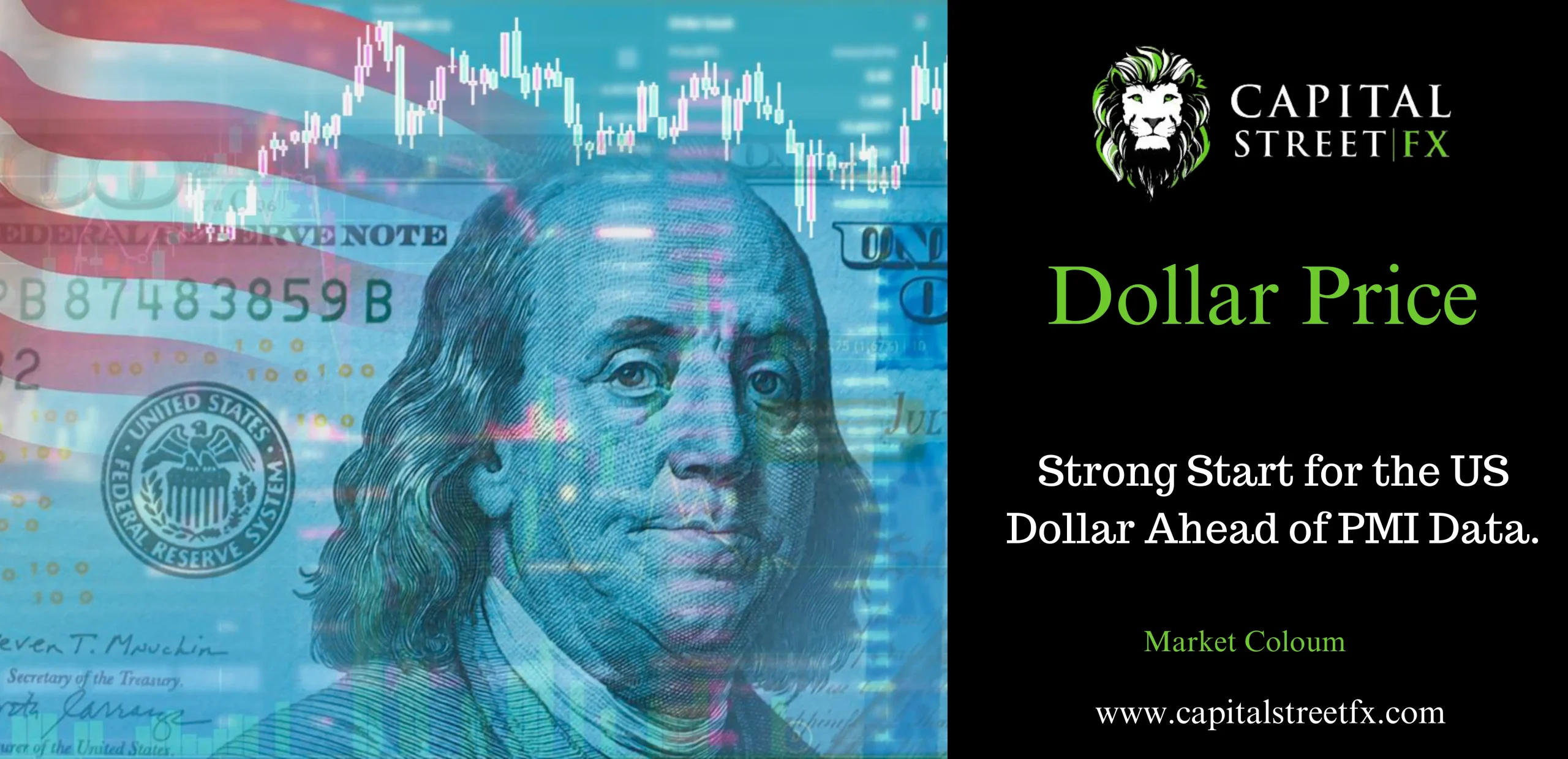Strong Start for the US Dollar Ahead of PMI Data.
Introduction
In the world of international finance, the US dollar stands tall, maintaining its strength against major competitors at the beginning of the week. As the US Services and Manufacturing PMI surveys loom on the horizon, the value of the US Dollar Index remains steady above 101.00. This article delves into the factors contributing to the dollar’s robust performance and explores its prospects amidst PMI data releases and the Federal Reserve’s impending policy statement.
US Dollar Shines Bright After Previous Week’s Outperformance
After an impressive show against its key rivals in the previous week, the US Dollar confidently kicks off the new week with a positive outlook. During the early European session, the US Dollar Index, which measures its value against six major currencies, reaches a significant peak since July 12, soaring near 101.50.
The PMI data from Germany, the EU, and the UK for early July came in below predictions, prompting capital outflows from the Euro and Pound Sterling into the US Dollar. This shift further bolsters the dollar’s position in the market.
US Economic Docket and Federal Reserve’s Crucial Policy Statement
The second half of the day will see the release of S&P Global’s PMI surveys, providing further insights into the state of the US economy. These crucial data points may influence the value of the US Dollar before the eagerly anticipated policy statement by the US Federal Reserve scheduled for Wednesday.
US Dollar Remains Bullish on Monday
The S&P Global Composite PMI for July is estimated to experience a slight dip to 53.1, indicating a continued increase in economic activity within the private sector. Moreover, the 10-year US Treasury note yield shows a resilient comeback, closing above 3.8% after a temporary dip earlier in the week.
Market experts have priced in a 25-basis-point Fed rate hike for Wednesday, with a 23% chance of an additional policy rate increase before the year’s end. Investors are showing interest in short Dollar positions ahead of key policy meetings for the Federal Reserve, ECB, and BoJ.
Wall Street Indices and European Economic Data
Wall Street indices concluded the previous week with mixed results. Presently, US market index futures show a slight uptick for the day on Monday morning.
Meanwhile, European economic data provides a mixed picture. The German HOCB Composite PMI saw a decline from 50.6 in June to 48.3 in early July, raising concerns about a potential recession in the second half of the year. Similarly, the Eurozone’s HOCB Composite PMI fell from 49.9 to 48.9, and the UK’s S&P Global/CIPS Composite PMI dropped from 52.8 to 50.7.
Technical Analysis: US Dollar Index Approaches Key Resistance
On the technical front, the US Dollar Index (DXY) showed promising movements. After testing the crucial short-term support at 101.00, the DXY started trending upwards. The Relative Strength Index (RSI) indicator on the daily chart rebounded towards 50, as a lack of seller interest bolstered the dollar’s position.
Looking ahead, key resistance levels lie at 101.70 (old support), and 102.00 (dynamic resistance), and are aligned with the 20-day Simple Moving Average (SMA). If the DXY manages to close above the latter, there’s a possibility of further gains, potentially reaching 102.50/60 (50-day SMA, 100-day SMA).
Should the DXY fall below 101.00, the next support level can be identified at 100.50 (static level).
Conclusion
The US dollar showcases its strength against major competitors as it maintains its position above 101.00. Market dynamics, along with PMI data releases and the Federal Reserve’s policy statement, are poised to impact the dollar’s future trajectory. Technical analysis indicates that the dollar is approaching key resistance levels, which could lead to further gains if surpassed. However, economic data from Europe paints a mixed picture, hinting at potential challenges ahead. As the week unfolds, investors keep a close eye on key economic indicators and policy decisions that will undoubtedly influence the currency’s performance in the global market.

